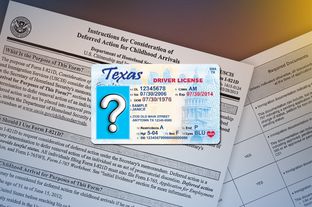Work Deferments for Immigrant Youths Higher in Texas

One year after President Obama’s decision to allow undocumented-immigrant youths to apply for renewable work permits and a two-year reprieve from deportation proceedings, Texas — perhaps due to its immigration policies — beats the national average of approved applicants.
At the same time, the Pew Research Center says that the number of undocumented immigrants in Texas has remained steady, or possibly increased, while the rest of the country saw a dip in overall illegal immigration the past few years.
Analysts argue that trend could also be attributed to the state’s middle-of-the-road polices on immigration enforcement.
The Deferred Action for Childhood Arrivals policy was implemented in August 2012. Since then, approximately 91,000 of the state’s 165,000 eligible immigrants (about 55 percent) have applied and been accepted for processing, according to data from the U.S. Citizen Immigration Services obtained by the D.C.-based Migration Policy Institute. Throughout the country, about 538,000 applications have been accepted out of a possible 1,089,000, or about 49 percent.
Taken together, California and Texas are home to 44 percent of the country’s DACA-eligible immigrants. Randy Capps, a senior analyst and demographer with the MPI, said geography is one reason for that. About 59 percent of the country’s eligible applicants are from Mexico, and Mexicans also have the highest application rate, about 64 percent.
But Texas’ policy of requiring applicants for driver’s licenses to prove legal status also comes in to play, Capps said. Although DACA holders are technically not legal residents, the Texas Department of Public Safety allows them to obtain driver’s licenses. DPS guidelines indicate that people who can supply the proper documents are granted “deferred action status” are allowed licenses or IDs that must be renewed annually.
“That is an incentive right there," he said. “And that’s the case with most states.”
An immigrant-friendly measure signed by Gov. Rick Perry could also be a reason the number of DACA applicants in Texas isn’t as high as earlier predicted. Certain states allow DACA holders to attend colleges and pay in-state tuition. But Texas has allowed that since 2001. If Texas' policies were more like those in North Carolina and Georgia, which have stricter higher-education rules and rank seventh and ninth, respectively, in the number of DACA applicants, the number of immigrants from Texas seeking the reprieve and work permits might actually be higher.
Texas is higher in the total number of undocumented immigrant residents. New data from the Pew Research Center’s Hispanic Trends Project shows Texas had about 1.7 million unauthorized immigrants in 2012, and did not experience declines in unauthorized immigration during 2007-11, a period of declines in those numbers in the rest of the country.
“There was a limited impact of the recession in Texas,” Capps said, specifically citing the plummet in the construction industry in other parts of the country. “Los Angeles, Phoenix, Miami, the Atlanta metro area — they were all devastated. You didn’t see that type of bust in Texas.”

